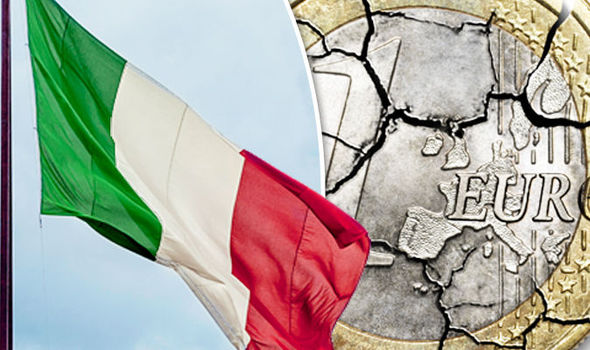The Italian banks reportedly have €360 billion of non-performing loans. Some analysis claim that many Italian banks are technically balance-sheet insolvent already. Earlier this week, Italy’s €40-billion bailout proposal was blocked Germany on the grounds that it contravened Europe’s new bail-in rules.
The great fear is an Italian banking crisis, or even bank run, before October’s crucial Italian referendum on constitutional reform, a vote that Prime Minister Matteo Renzi has turned into a confidence vote after saying he would resign if he loses the vote. The problem is that EU rules prohibit more aggressive government interventions to bail out and fix the banks in an effective manner, and if a really serious banking crisis happens this will empower the anti-EU political forces in Italy to push for a referendum on EU membership, which is already a demand of the Italian Northern League and the “Movimento 5 Stelle” (Five Star Movement) party (which won a number of local elections earlier this month).
Cue Plan B as the EU authorises Italy to use “government guarantees” to create a “precautionary liquidity support program for their banks.“ The total amount currently doing the rounds is €150 billion. The latest move, which has received scant attention in the press, seems to be more of a political stunt than a prudential one.
The EU has said the funds don’t breach the state aid rules because they won’t actually be used (!). The Commission has stipulated that only “solvent” banks are eligible for the “precautionary” scheme for the Italian banks. This seems like a measure designed for an imaginary Italian banking system and not the real one which has seen its shares falling by by 54% in just the last six months. The imaginary Italian banking system is of course brimming with banks that are perfectly solvent but would nonetheless appreciate the kind offer of new funds they can’t use.
The offer of aid which won’t (and under EU rules cannot) be used doesn’t of course solve the banks’ main problem – capital holes. Instead, the aid has a secondary purpose: to show Prime Minister Matteo Renzi can do deals in Brussels. Italy is using the panic from the UK vote to ask the European Commission to let it bail out its banks and skip state-aid rules. Getting the green light would provide an even bigger boost to Renzi’s chances in the referendum, yet the Commission may not approve such a flagrant bailout. As such, getting the go-ahead even on unused guarantees is a start.
The scheme is clearly a desperate ruse, but if it can temporarily convince enough voters, investors, and bank depositors that things are not quite so bad in Italy anymore, that the banks finally have something of substance — and not just unusable, inaccessible funds — backstopping their €360 billion worth of non-performing loans, it will have served its purpose.
Perhaps things might even improve enough to enable Italy’s Prime Minister Matteo Renzi to buck recent trends in Europe and actually win a national referendum, scheduled for October, which would allow him to push though changes to the country’s constitution. If he doesn’t, it could become a vote against him, or yet another against the European Union, and sink the government.

